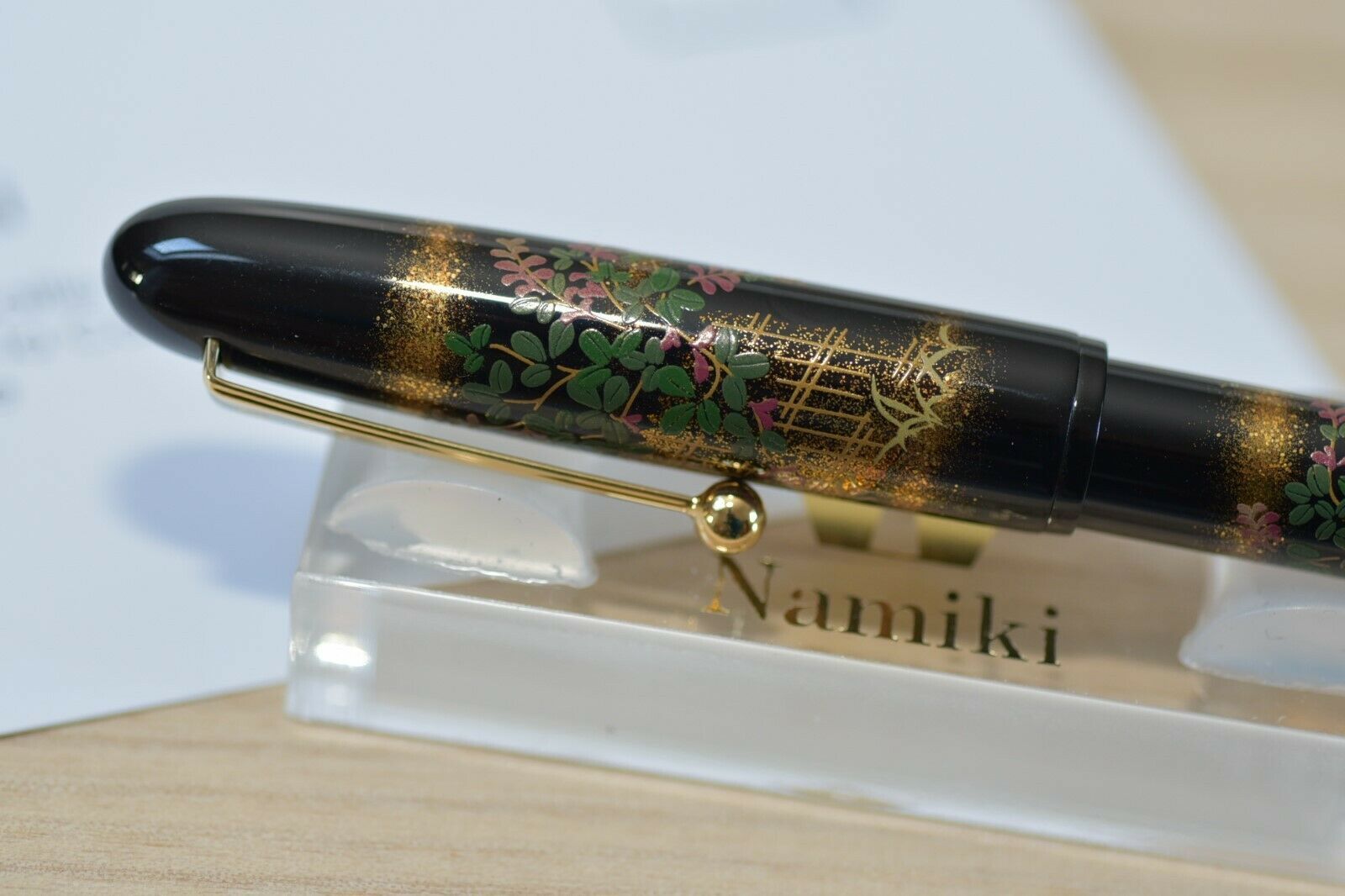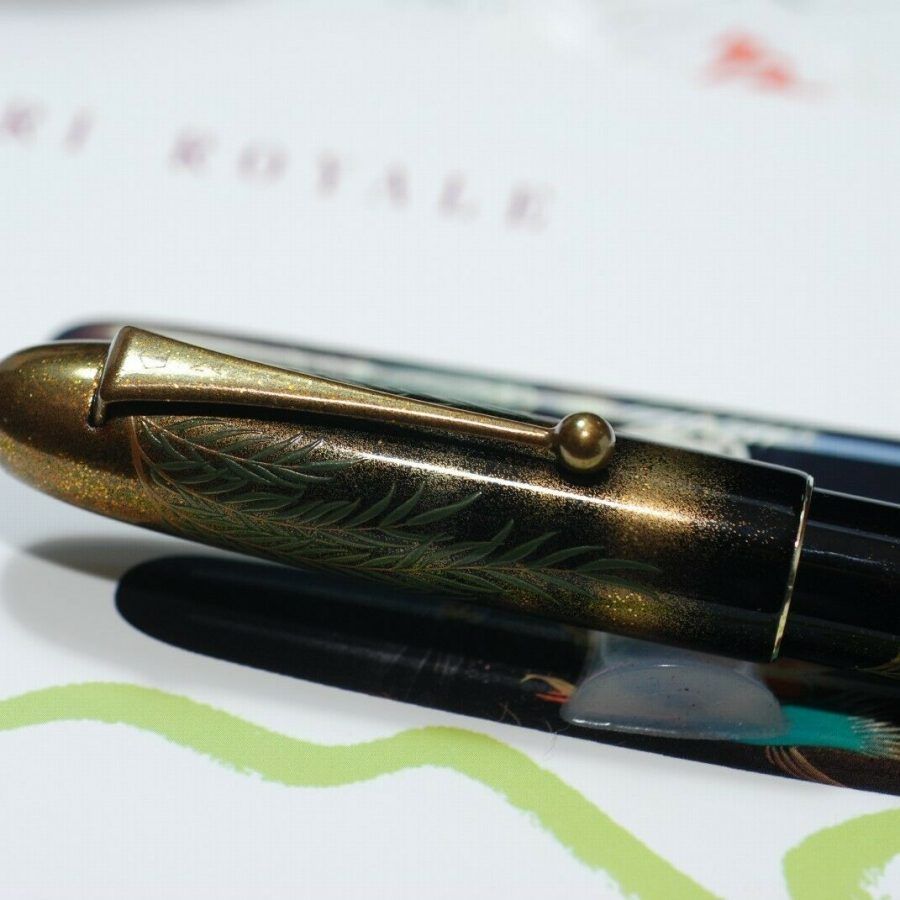Namiki Yukari Flower Fence Maki-E Fountain Pen
1.595,00€
Fountain Namiki Yukari Flower Fence
Haie De Fleurs Maki-E
The Yukari Collection vividly expresses the nature of the four seasons by combining designs with various techniques such as Togidashi-Taka Maki-e (Burnished-Raised Maki-e) and Raden (Mother-of-Pearl). While being a size that can be carried and used every day, it harbors Japanese beauty down to the finest detail
The design features flower fence images crafted with Togidashi-Taka Maki-e technique
Features 18 karat gold nib in medium nib grade
Accepts either ink cartridges or ink converter
Converter for manual ink filling is provided as standard accessory
Out of stock
Description
Views: 210
Around 90 years ago, it was normal practice to use ebonite, a combination of sulphur and rubber, for the body of fountain pens. However, although ebonite showed tolerance towards ink, it had the shortcoming of changing colour and losing its shine over time. It was then, a specialist development team from Namiki co. overcame this problem.
They started using lacquer, a superior coating method called lacquered ebonite which created an attractive body and was tolerant to deterioration. Lacquer is a natural coating, processed from the sap taken from the sumac tree.
The undercoat of Maki-e fountain pens is black lacquer. This is lacquered to the body. Motifs are drawn by several types of brushes on the lacquer undercoat. Powdered gold is sprinkled onto the lacquer. A fine bamboo tool called Funzutsu is used in this process. After lacquer has been applied to the whole pen the lacquer is rubbed off with charcoal until the pattern appears on the surface.
About Kokkokai:
Kokkokai are a group of Maki-e artisans formed in 1931 centered around Gonroku Matsuda. Even today, Maki-e artisans from inside and outside the company, who have inherited Matsuda’s will, are making lacquerware around Japan. Kokkokai or the name of the artisans have been inscribed on each individual piece of Namiki work.
The Yukari Collection vividly expresses the nature of the four seasons by combining designs with various techniques such as Togidashi-Taka Maki-e (Burnished-Raised Maki-e) and Raden (Mother-of-Pearl). While being a size that can be carried and used every day, it harbors Japanese beauty down to the finest detail
The design features flower fence images crafted with Togidashi-Taka Maki-e technique
Features 18 karat gold nib in medium nib grade
Accepts either ink cartridges or ink converter
Converter for manual ink filling is provided as standard accessory


 Español
Español 















